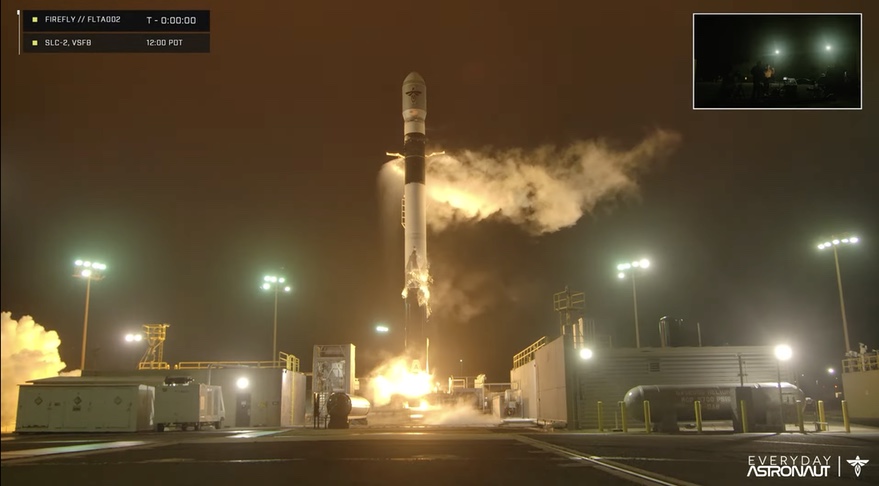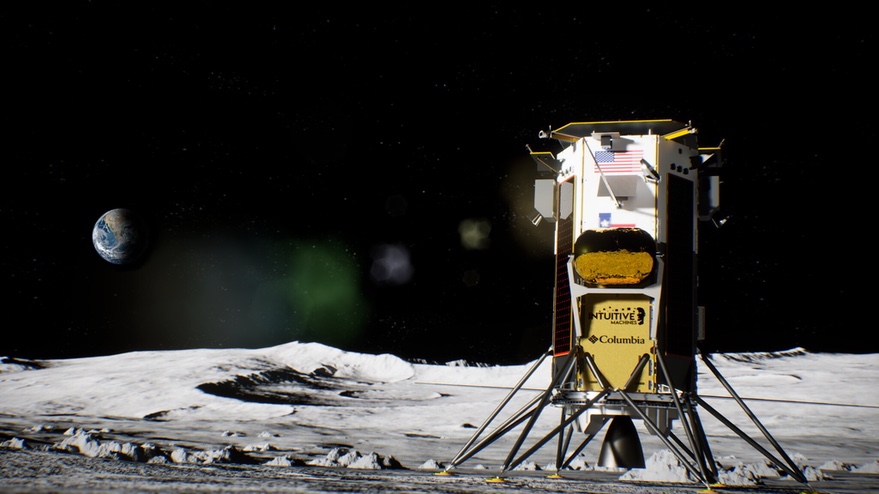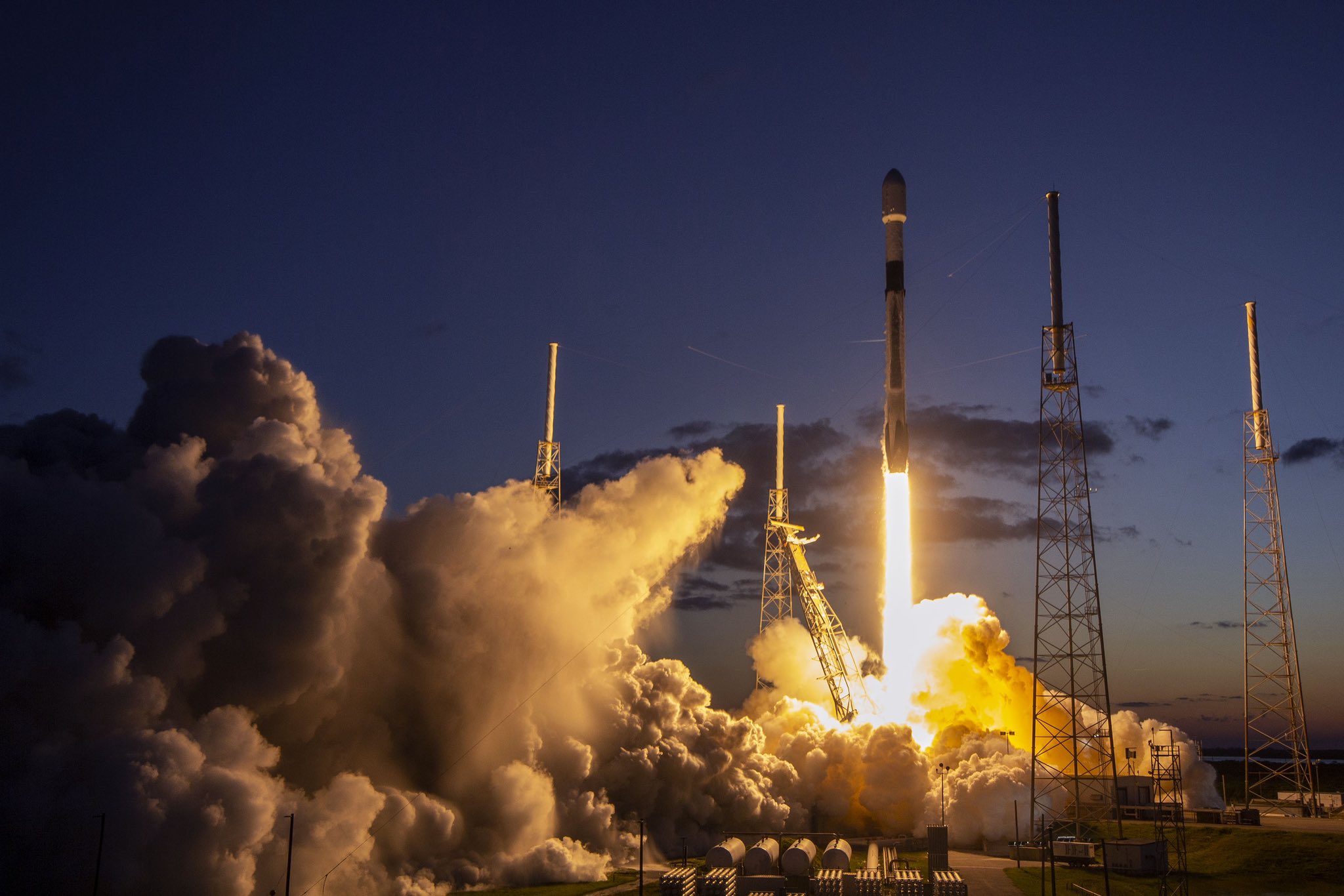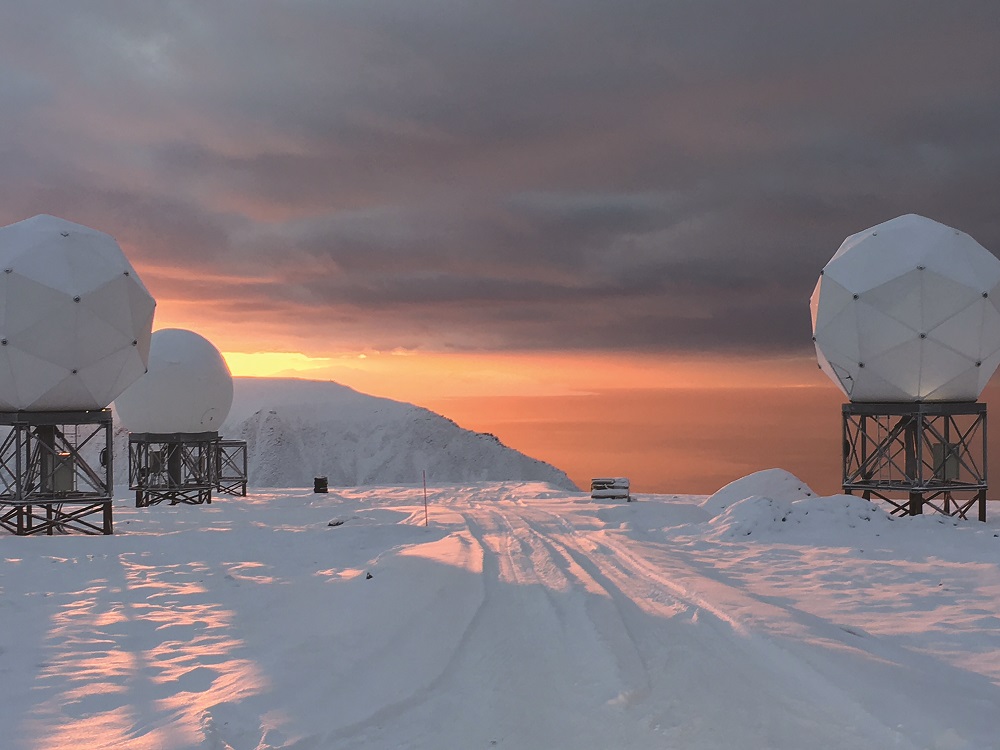Firefly says Alpha launch a success despite payload reentries
Original Publication Date: 2022-10-10 11:26

Firefly Aerospace says its Alpha launch early this month was a success. But its payloads, placed in a lower orbit than planned, reentered within several days. That’s led to speculation that there was a problem with the launch. Firefly, though, reiterated the launch was a success.
Space companies face difficult investment environment
Original Publication Date: 2022-10-11 12:10

Rising interest rates are making it more difficult for space startups to raise money. Some companies are turning to special purpose acquisition corporations, or SPACs. Astra, a space launch company that went public through a SPAC merger in mid-2021, announced a delisting warning.
SpaceX deploys two of six C-band satellites Intelsat is launching this year
Original Publication Date: 2022-10-10 17:02

SpaceX launches first two of seven satellites Intelsat needs to clear C-band spectrum. Rocket's reusable first stage also successfully landed on a SpaceX drone ship. A helium leak had forced SpaceX to scrub a previously planned Oct. 6 launch. Intelsat stands to get nearly $5 billion from the Federal Communications Commission.
Former SES CEO joins megaconstellation startup E-Space
Original Publication Date: 2022-10-10 15:53

Karim Michel Sabbagh has returned to the space industry to oversee strategy. Sabbagh left SES in April 2018 to head Abu Dhabi-based cybersecurity company DarkMatter. Florida-headquartered E-Space has Rwanda-backed spectrum filings for 300,000 low Earth orbit satellites.
Launch on demand: If satellites are shot down, will Space Force be ready to restock?
Original Publication Date: 2022-10-10 14:00

The U.S. Space Force plans to launch a small satellite mission in 2023. The point of Victus Nox is to demonstrate fast turnaround launch operations. Congress has criticized the Pentagon for not moving more quickly in this area. The House Armed Services Committee and the Senate Appropriations defense subcommittee are proposing $100 million for 2023.
U.S. Arctic strategy calls for investment in climate monitoring, communications technologies
Original Publication Date: 2022-10-09 15:41

The White House on Oct. 7 released 'The National Strategy for the Arctic Region' The plan recommends investments in infrastructure to monitor the region. Russia has invested significantly in its military presence in the Arctic over the last decade. China is seeking to increase its influence in the Arctic through economic, diplomatic, scientific, and military activities.
NASASpaceFlight.com
The SSLV or Small Satellite Launch Vehicle conducted its launch debut from Sriharikota, India on Sunday, August 7. An issue with the fourth stage resulted in the satellites being deployed in an unusable orbit. The SSLV program’s genesis was a December 2015 National Institute of Advanced Studies proposal to create a “Small Satellite Launch Vehicle-1”
Commercial Archives
The full interview will be posted on CNN.com on Wednesday, September 26th, at 10pm. Click here to watch the full interview on CNN.com. Click here to read the full interview on Friday, September 27th at 10pm on CNN.
International Archives
Russia adds another satellite to its current satellite navigation network. Liftoff occurred at 5:52 AM Moscow Time (02:52 UTC) on Oct. 10 from the Plesetsk Cosmodrome. GLONASS-K1 No. 17 was carried by a Soyuz-2.1b/Fregat rocket.
Chinese Long March 3B Launches APStar-6C Communications Satellite – Spaceflight101

China launches rare commercial rocket with APStar-6C communications satellite. Long March 3B lifted off from Xichang Satellite Launch Center at 16:06 UTC on a mission of under half an hour to lift the spacecraft into an elliptical Geostationary Transfer Orbit. Replacing APStar-6, launched in 2005, the satellite will deliver VSAT services, video distribution and Direct-to-Home television.
Blue Origin’s New Shepard Reaches new Heights in latest Test Flight – Spaceflight101

Blue Origin launched their reusable New Shepard launch system on Sunday. The mission was designed to expand the vehicle’s operational envelope by sending it to a peak altitude of 107 Kilometers. Sunday’s flight marked the second for this particular set of hardware, following up on the successful December 2017 mission that debuted “Crew Capsule 2.0”
ISS Updates – Spaceflight101 – International Space Station

A veteran NASA spacewalker and an EVA rookie from Japan ended their week with nearly six hours of work outside the International Space Station on Friday. The restoration of the Station’s Mobile Servicing System started last year and continued in January to provide Canadarm2 with a new pair of grappling hands.
Featured – Spaceflight101

SpaceX Falcon 9 takes to the skies over Florida’s Cape Canaveral Monday afternoon. First of at least six cargo ships inbound to the U.S. Segment of ISS this year. Dragon spacecraft will deliver science gear, supplies and maintenance hardware to the orbiting laboratory.
News – Spaceflight101

Europe's Copernicus satellite fleet is gearing up for the arrival of its next addition on Wednesday. A Russian Rockot booster set to blast off from the Plesetsk Cosmodrome at 17:57 UTC with the Sentinel-3B multi-function satellite. Read more
Re-Entry: Long March 11 Rocket Body – Spaceflight101

The CZ-11 fourth stage used leftover propellant for a partial de-orbit maneuver, lowering its perigee to 120 Kilometers to significantly accelerate its orbital decay. It is reportedly built around a YF-50 main engine and conducts the orbital circularization after the three CZ-11 stages finish their job.
Documentary Series: JPL and the Space Age

NASA's Jet Propulsion Laboratory is widely known for its trailblazing role in space exploration. JPL and the Space Age uses rare archival footage and interviews with many of JPL’s pioneering engineers and scientists. Each episode was written, produced and directed by JPL Fellow and national Emmy Award-winning documentarian Blaine Baggett.
Caltech/JPL Privacy Policies and Important Notices

Caltech/JPL's policies on privacy, security, accessibility, linking and copyright. Information you provide on a Caltech/JPL Web site will be used only for its intended purpose. We will only share your information with a government agency if it relates to that agency.
My Favorite Martian Image: ‘Enchanted’ Rocks at Jezero Crater

The rocks of the crater floor are igneous in origin, having formed billions of years ago from molten rock. Over time, mud, silt, and sand brought into the lake that filled Jezero compressed and solidified into thin layers of sedimentary rock. If microscopic organisms were also present during sedimentary rock formation, they could have been captured within the layers.
JPL’s Venus Aerial Robotic Balloon Prototype Aces Test Flights

A concept for a robotic balloon and Venus orbiter. The balloon would travel into the atmosphere, while the orbiter would stay above it. The concept was developed by scientists at NASA's Jet Propulsion Laboratory in Southern California and the Near Space Corporation in Tillamook, Oregon.
NASA’s InSight Waits Out Dust Storm

InSight saw a recent drop in power generated by its solar panels as a continent-size dust storm swirls over Mars’ southern hemisphere. With less sunlight reaching the lander’s panels, its energy fell from 425 watt-hours per Martian day, or sol, to just 275 watt-hours per sol. To conserve energy, the mission will turn off InSight’s seismometer for the next two weeks.
JPL Developing More Tools to Help Search for Life in Deep Space

OWLS has been funded by JPL Next, a technology accelerator program run by the Lab’s Office of Space Technology. In June, after a half-decade of work, the project team tested its equipment on the salty waters of Mono Lake in California’s Eastern Sierra. OWLS found chemical and cellular evidence of life, using its built-in software to identify that evidence without human intervention.
Citizen Scientists Enhance New Europa Images From NASA’s Juno

Citizen scientists have provided unique perspectives of the recent close flyby of Jupiter’s icy moon Europa. By processing raw images from JunoCam, the spacecraft’s public-engagement camera, members of the general public have created deep-space portraits of the Jovian moon.
